All about calendula and its cultivation

Calendula has a huge number of medicinal properties. It is used in the preparation of a wide variety of useful tinctures, so many gardeners grow the plant in their plots. Today we will talk about the features of this flower, how it needs to be planted and grown.
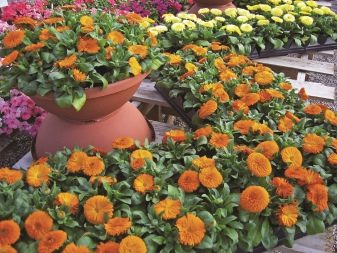
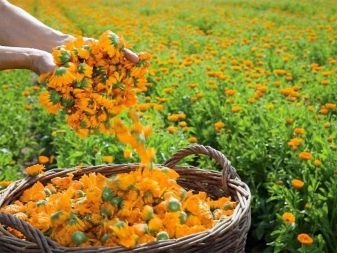
general description
Calendula flowers are also often called marigolds. It belongs to the herbaceous genus, to the Aster family. This culture is common in temperate regions. The plant is considered cold-resistant and light-loving enough.
Calendula can be annual or perennial, its stem is erect. It is covered with fine hairs and leaves, which are arranged alternately. The plant can range in length from 20 to 70 centimeters.
The flowers look like small baskets on top of the stems. Their color can vary greatly from snow-white to brown. The flowering period is June-September, depending on the variety.
In the medical field, flower petals are most often used, as well as individual inflorescences. They are used in the manufacture of various herbal preparations and ointments.
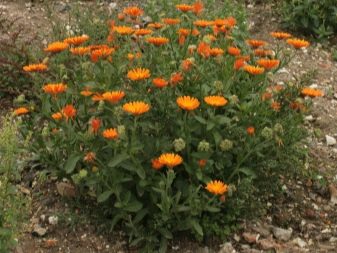
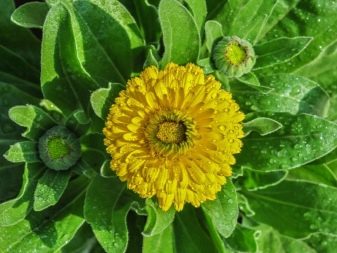
Benefit and harm
Calendula is used in various fields, including medicine and cosmetology, and has many beneficial properties.
- The plant secretes special phytoncides, these substances lead to the death of various pests, so the calendula will help to quickly get rid of the nematodes, bears, and rattle flies in the country.
- Often, the green mass is deepened into the ground in order to use it as a natural green manure. This procedure contributes to the health of the soil.
- Calendula is often used in the treatment of diseases of the gastrointestinal tract, including gastritis, in diseases of the liver, cardiovascular and nervous systems. After all, its flower buds contain such useful components as carotenoids, tannins, organic acids, enzymes, saponins and essential oils.
- Solutions prepared on the basis of calendula will also help with respiratory diseases, stomatitis, periodontal disease, and a simple cough. The plant has an antibacterial effect. Many cuts, burns, and bruises are easily healed with calendula ointment. Calendula flower oil is successfully used for varicose veins and bedsores.
- The plant allows you to have anti-inflammatory, sedative, diaphoretic, analgesic effects. It enhances immunity. Homemade formulations with calendula are often drunk to get rid of heartburn, improve metabolic processes in the body.
- Often, cosmetics for hair are also produced on the basis of the plant. They will make them stronger and more obedient.
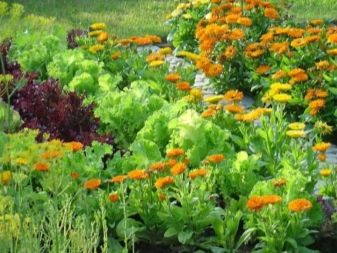
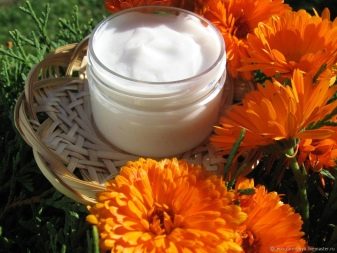
But sometimes such a plant can do harm.
- It is not recommended to take medications with calendula with increased acidity of the stomach, with acute ulcers.
- They are undesirable for use by people who have suffered severe head injuries.
- Children, pregnant women are also prohibited from taking flower-based compositions inside.
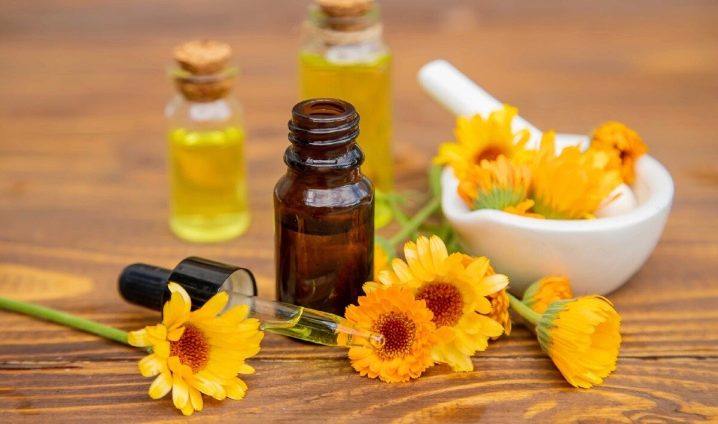
Types and varieties
Let's analyze the features of some varieties and types of calendula.
- Common calendula. This variety is considered the most common. It grows in southern Europe. The plant is an annual flower with straight and highly branched stems.The leaf blades are oval, slightly elongated and pubescent. The buds have a strong fresh scent. The petals at the top are glossy, their colors are orange or yellow. They are matte on the underside. The central part of the plant is represented by small tubular buds of various bright colors. This species blooms from mid-summer to late autumn. The seeds of such calendula retain their germination capacity for 5-6 years. Many other varieties have been created on the basis of this species.
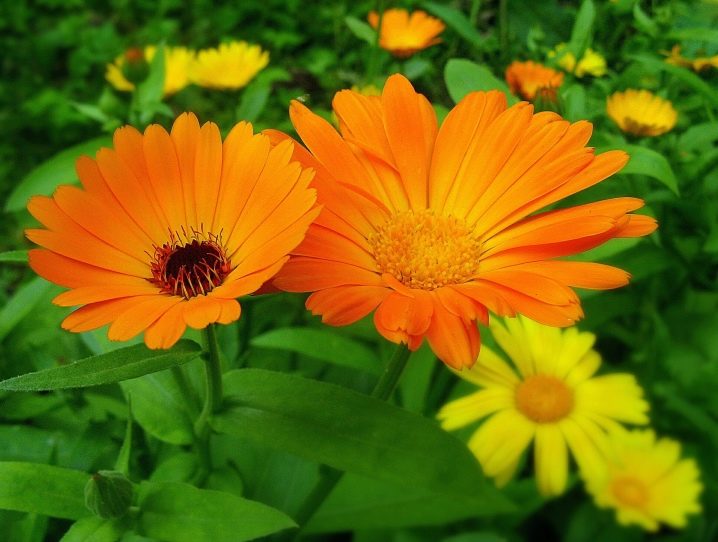
- Field. This calendula is also annual. The plant has a height of 15-30 centimeters. The stem of this flower is straight, highly branched. A slight pubescence can be seen on it. Leaves of simple shape are placed along the entire length of the stem. Flower buds with a diameter of 1-2 cm form beautiful inflorescences in the form of baskets. Their colors are yellow. This type is not very popular with gardeners, because the flowers are too small and inconspicuous.
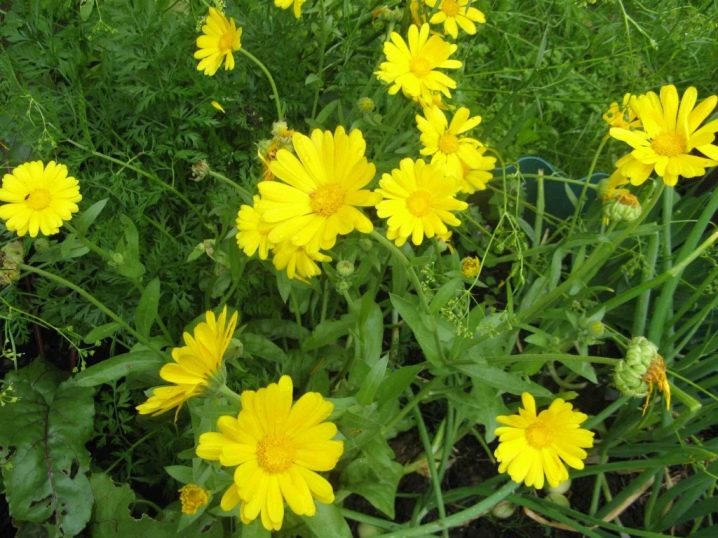
- "Radio". This variety is medium-sized and compact. It is widely used in the medical field. The variety has a height of 35 to 50 centimeters. The stems of the plant are quite tough and durable, their surface is ribbed. The leaves are light green, their shape is slightly elongated, oval. On their surface, one can observe relief pronounced veins. Single buds are collected in terry inflorescences, their diameter is on average 7-8 centimeters. The petals twist a little into a tube and form rays.
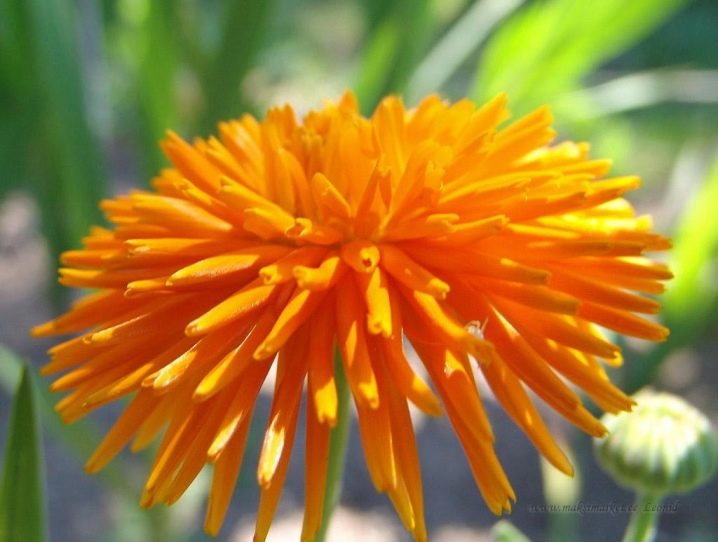
- "Juwel". This variety is quite voluminous and lush. The bush is spherical, its height is on average 45-50 cm. The stem of the plant is light green, its shape is pentahedral. The leaf blades are relatively large and elongated. The buds are collected in semi-double or double inflorescences with a diameter of 6-8 cm. The central part of the plant is represented by a yellow flower with flat petals.
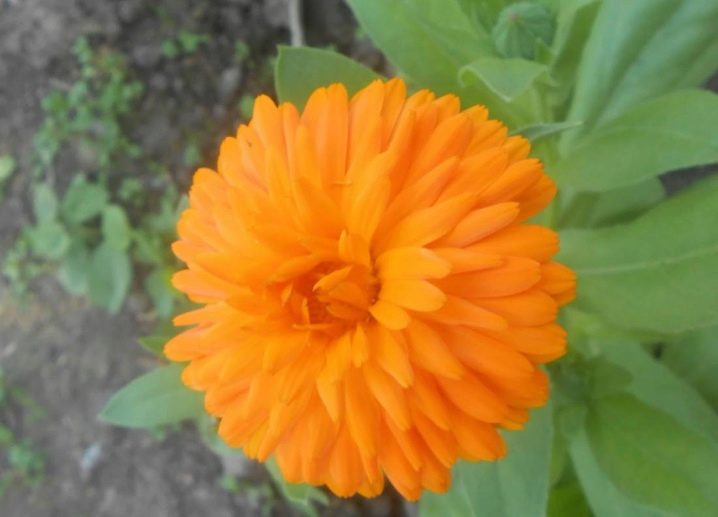
- "Indian Prince". The variety is tall, its height is 60-70 cm. Its flowers are large enough, their surface is terry. Large tubular buds in rich orange color. This type is often used when making bouquets. It is also often grown in flower beds as ornamental vegetation.
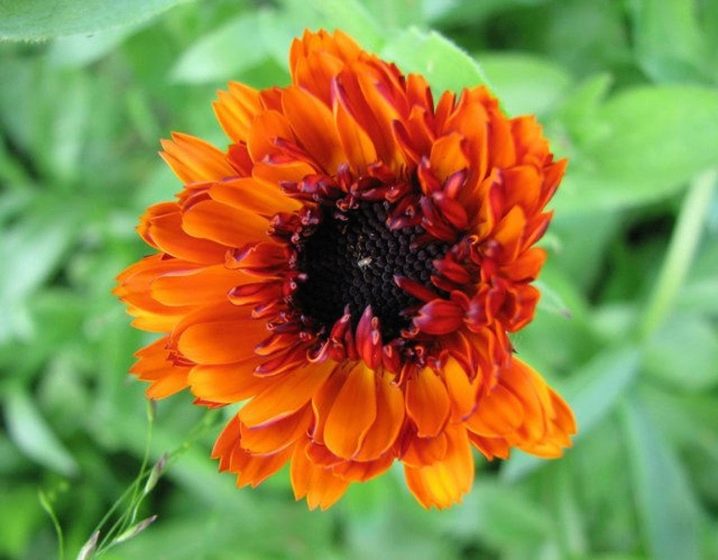
- "Geisha". This densely doubled variety grows with beautiful bright red-orange inflorescences. "Geisha" has a particularly lush foliage. This calendula is considered absolutely unpretentious to care for. It blooms from the end of June until the onset of frost. This variety is also often used to create beautiful bouquets.
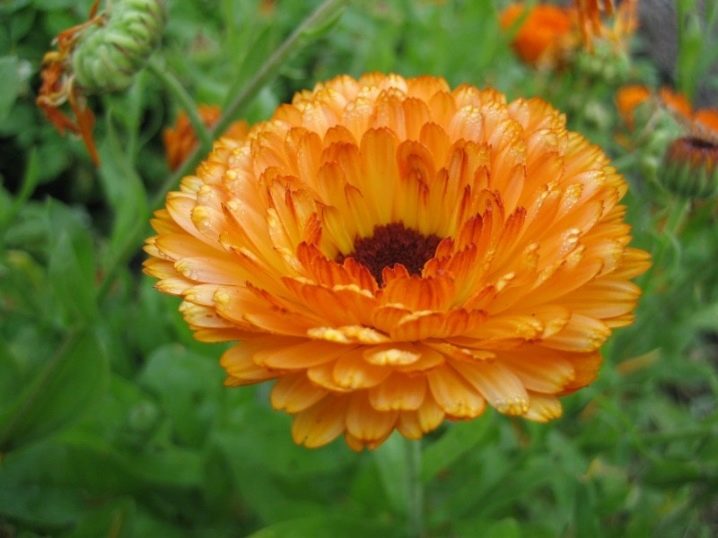
Landing
The soil must be fertilized before planting. For this, compost, potash (they can be replaced with simple ash) and phosphorus fertilizers are used. River coarse sand is also added to the soil.
You need to sow seeds in pre-prepared small grooves. When planting in a flower bed, the material is scattered pointwise.
The seeds will need to be deepened a couple of centimeters. From greater depths, it will be much harder for them to germinate.
If you planted seeds in the spring, then they should be immediately watered with heated water. If the planting was carried out in the fall, then watering is not needed at all. Young shoots should appear in about 6-7 days. After a month, you can already thin out the seedlings.
The resulting seedlings are transplanted to a permanent place. In this case, you need to choose a well-lit place. It must be protected from the northerly winds. Sometimes the seeds are planted directly on the site.

Care
If you planted calendula outdoors, you will need to properly care for it.
- The flower needs to be watered regularly. Make sure that the liquid does not stagnate in the soil. The procedure is best done in the early morning or evening. Sometimes you can simply irrigate the entire bush with clean water. In dry and too hot weather, the amount of watering should be increased.
- Remember that if the watering is too frequent and not abundant, then the flower will begin to actively develop surface roots, because of which it may die in drought. Once every 2-3 weeks, it is recommended to water the vegetation with a solution with ammophos or nitrophos.
- Also, calendula should be fed periodically. Ready-made compositions ("Plantofol", "Kemira") will be an excellent option. Fertilizers should be used several times per season.
- The first time feeding is applied immediately after planting the seedlings into the soil. In this case, superphosphate or any other complex fertilizer in powders or granules is scattered into the planting pits.
- During flowering, it is worth excluding fertilizing, which contains nitrogen. After all, such an element has a bad effect on the quality of flowers. They become too small, change their color. In addition, an excess of nitrogen will lead to the development of various infections.
- Organic ingredients are used once a month throughout the summer. They can be purchased ready-made in the store, sometimes manure and bird droppings are taken for these purposes.
- Remember to periodically remove all weeds around the marigold. The soil in this zone also needs to be loosened well in a timely manner.
- When growing calendula, you must immediately remove faded inflorescences. This procedure stimulates the formation of new buds. If the inflorescences are not collected, then the flowering of the plant will end in the middle of the summer season.
- In order for the bushes to give new side shoots, and so that they become more voluminous and lush, the tops of the main stems must be pinched.
- If you grow calendula at home in a pot, then it will also need to be watered regularly. The topsoil should not be dry. Sometimes the entire bush is irrigated with water. The plant pot should be placed on a windowsill on the sunny side so that it receives enough light.
- Calendula should be kept at a temperature of at least 20-25 degrees Celsius. It does not require seasonal changes in the temperature regime, since it does not have a dormant period.
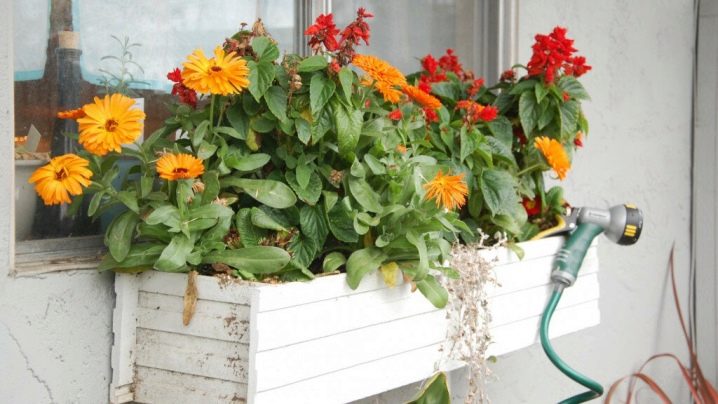
Reproduction
Calendula is most often propagated by sowing seed in open soil. This procedure is performed from mid-spring to early summer. Also, seeds are planted in November before winter.
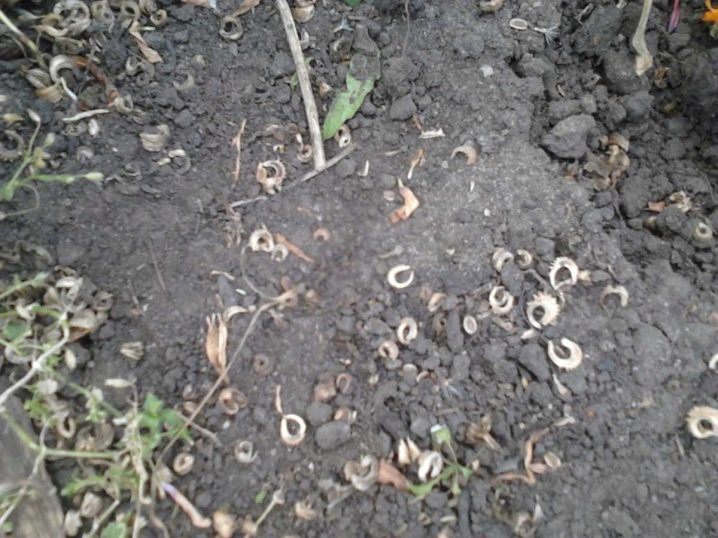
Diseases and pests
Calendula can be affected by various diseases. She most often suffers from powdery mildew. When infected, a white bloom forms on the plants, over time it becomes dark. Powdery mildew leads to the fact that the flower stops growing and development, begins to turn black, foliage curls strongly. It also significantly reduces cold resistance.
To combat the disease, fungicides should be applied immediately. Their action is aimed at destroying pathogenic fungi. Such drugs include Topsin, Fundazol, etc. For prophylaxis, it is necessary to periodically thin out the calendula, weed the ground, clean the area of all plant residues.
Calendula is also affected by a variety of pests. One of them is aphid. The parasite colonizes plants. He sucks the juices from the flower, which can lead to his early death. To get rid of all harmful insects, calendula is treated with the preparations "Akarin", "Actellik", "Fufanon", "Karbofos".

Collection
As a rule, calendula begins to bloom 3-4 weeks after the formation of the first shoots. Its useful inflorescences in the form of baskets can be harvested almost immediately. Remember that the amount of medicinal components in a flower directly depends on the brightness and saturation of the color.
The more buds are harvested, the more new flowers will bloom, and flowering will continue until the first frost. If the flowers are not collected at all, then the flowering will stop already in the middle of summer.
In August, ripe seeds are also necessarily harvested. This is done in order to prevent self-seeding.
Ripe inflorescences should be harvested in dry weather. Gathering flowers is not recommended for those who suffer from bronchial asthma, as their pollen can cause an allergic reaction.
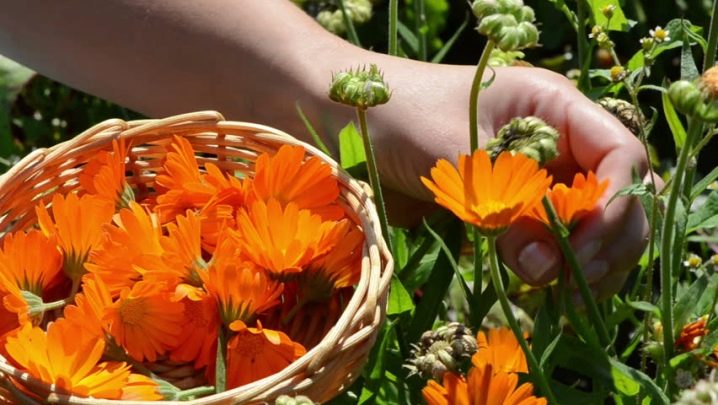
Application in landscape design
Many gardeners plant calendula as an ornamental plant. So, you can plant a flower in low stone flower beds. It is better to plant other beautiful low-growing vegetation of a rich green color next to it to get a beautiful and neat composition.
Some gardeners create entire flower beds on their plots, using also flower bed types of calendula. It will look good with almost any other color. It is better to choose plants with bright and interesting colors. You can make several such compositions at once.
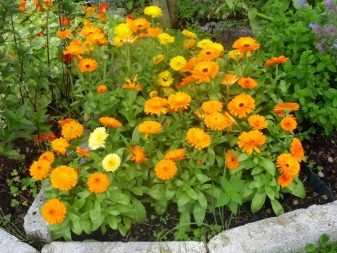
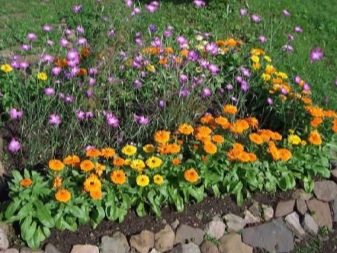







































































































The comment was sent successfully.